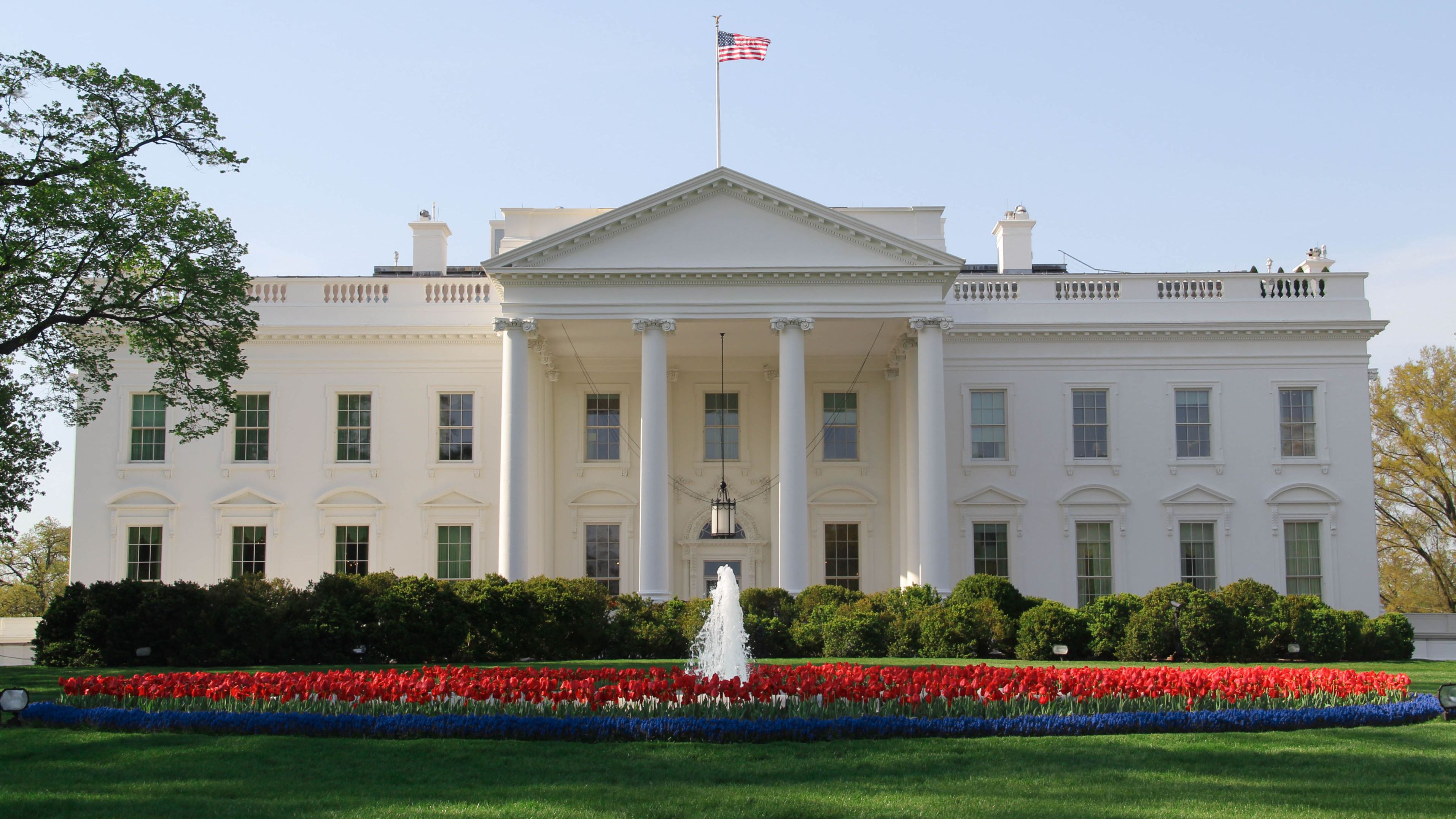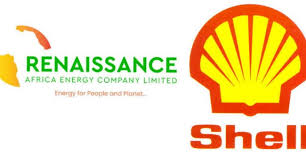Oil & Energy
How Oil Industry Fared Under Last Nine US Presidents

With the 2020 Presidential Election looming, and with many claims and counterclaims about a president’s impact on the oil industry, I thought it might be of interest to review the history of U.S. oil production and consumption over the past 50 years. Here are the highlights from each president’s term in office.
Richard Nixon was inaugurated as the 37th president on January 20, 1969. When President Nixon took office, U.S. oil production was nearing a peak after over 100 years of increasing production. Imports made up 10% of U.S. consumption. In 1970, U.S. oil production reached 9.6 million barrels per day (BPD) and began a long, steady decline.
Richard Nixon began his second term on January 20, 1973. U.S. oil production had declined to 9.2 million BPD while consumption had increased by 3 million BPD from the first year of Nixon’s first term. As a result, oil imports would more than double during Nixon’s presidency, and American citizens would learn the danger of the dependence on imports with the OPEC oil embargo of 1973.
Gerald Ford was inaugurated as the 38th president on August 9, 1974 after Nixon resigned in disgrace. During President Ford’s term in office, domestic oil production continued to decline. U.S. oil consumption and imports continued to grow, and both were at all-time highs during Ford’s last year in office.
Jimmy Carter was inaugurated as the 39th president on January 20, 1977. Recent trends in consumption, production, and imports all reversed themselves during President Carter’s term. Consumption fell by 2%, U.S. production increased by 6%, and imports, after initially rising to record highs during his first year in office, were a fraction of a percentage lower at the end of his term than during Ford’s last year in office. Factors beyond Carter’s control, such as the Iranian Revolution and the Iran–Iraq War, heavily influenced the oil markets.
Ronald Reagan was inaugurated as the 40th president on January 20, 1981. Oil consumption continued to decline during most of President Reagan’s first term, and oil production crept back to levels that had not been seen in a decade. Oil imports fell by 35% during his first term.
Ronald Reagan began his second term on January 21, 1985. The trends from his first term all reversed themselves, as consumption rose 10%, domestic production fell by 8%, and oil imports increased by 49%.
George H. W. Bush was inaugurated as the 41st president on January 20, 1989. Consumption fell slightly during his term, but domestic production fell even more, down 12%. Imports increased by 19%, back above 6 million BPD for the first time since the 1970s.
Bill Clinton was inaugurated as the 42nd president on January 20, 1993. During his first term, consumption increased by another 7%, domestic production fell by 10%, and imports increased by another 23%, exceeding 7 million bpd for the first time in U.S. history.
Bill Clinton began his second term on January 20, 1997. His second term trends were almost identical to those of his first term. Consumption rose by another 8%, domestic production fell by another 10%, and imports increased by an additional 21%. Consumption and oil imports were at all-time highs, and production had fallen 40% from the 1970 production peak.
George W. Bush was inaugurated as the 43rd president on January 20, 2001. During his first term, consumption climbed above 20 million BPD for the first time in the nation’s history. Imports also reached new highs, above 10 million BPD. Domestic production continued to fall.
George W. Bush began his second term on January 20, 2005. During Bush’s second term, consumption began to decline as the nation entered a recession and oil prices reached record highs. Imports fell back to below 10 million BPD. The decline in domestic production continued, albeit at a slower rate of decline than during his first term. This marked the first trickle of oil production from hydraulic fracturing, which would make a major impact during the terms of the next two presidents. During Bush’s last year in office, the level of imports reached just over 50% of U.S. consumption.
Barack Obama was inaugurated as the 44th president on January 20, 2009. The economic sluggishness initially continued, but the impact of hydraulic fracturing began to be felt in President Obama’s first year in office. In a reversal of the long decline that began in 1970, crude oil production would rise all four years of Obama’s first term.
President Obama began his second term on January 21, 2013. The fracking boom caused oil production to accelerate until 2015. But then overproduction led OPEC to initiate a price war that ultimately crashed prices and production. Production began to decline in 2015, but 2016, the last year of Obama’s second term, was the first year of his presidency that annual oil production declined.
Between 2009 and 2015 oil production had increased by 4.4 million BPD. This was the fastest increase in oil production in U.S. history, and marked the largest increase in oil production during a single term of any president. If natural gas liquids (NGLs) are included, the gains during Obama’s first seven years were 6 million BPD. U.S. net imports of finished products like gasoline turned into net exports during Obama’s second term, and next imports of finished products plus crude oil fell by over 6 million BPD.
Donald Trump was inaugurated as the 45th president on January 20, 2017. Oil production had declined during President Obama’s last year in office as the average annual price of West Texas Intermediate (WTI) fell to $43.34/bbl. But in 2017 that rose to $50.79/bbl, and then to $65.20/bbl in 2018. Oil production followed prices higher. During the first three years of President Trump’s first term, annual U.S. oil production gained 3.4 million BPD. Net imports of crude oil and finished products turned into net exports in late 2019. U.S. oil production eclipsed the previous 1970 peak (although if you include NGLs, that peak was eclipsed in 2013).
But then the Covid-19 pandemic crushed oil demand. Now, less than a month before the election, U.S. oil production is at 10.5 million BPD, a significant decline from the 12.2 million BPD of 2019.
The net impact of the past 50 years of U.S. Presidents was a long, slow decline of oil production that was only reversed when the hydraulic fracturing revolution began.
U.S. oil production didn’t fall under Bush and rise under Obama based on the policies of these presidents. Production behaved according to policies that had been put in place years earlier, and in accordance with the behavior of oil prices in previous years. Jimmy Carter experienced a rise in oil production because the Alaska Pipeline, approved by Nixon, was completed while Carter was in office. Obama and Trump experienced a rise in oil production following years of climbing oil prices, which led to a fracking boom.
Presidents publicly fretted for decades about the loss of energy independence for the U.S. They tried many different approaches to solving this problem, from serious intervention in the energy markets to letting the free market solve the problem. Many billions of dollars were spent on programs with the intent of eliminating dependence on foreign oil.
Yet in 1969, Americans depended on oil imports for 10% of their consumption, and in 2008 that number had risen to over 50% of consumption. That trend was only reversed when fracking caused U.S. oil production to surge.
Thus, a president may have some impact on U.S. oil production, but it is mostly a factor of influences well beyond their control.
Culled from Oil Price International, London.
Oil & Energy
Hedge Funds Turn Bearish On Oil, Bullish On Natural Gas

Traders have not been this bearish on oil in months or so bullish on United States natural gas in years.
The latest data on money managers’ positioning in the WTI and Brent crude and U.S. natural gas futures showed two contrasting trends—speculators are betting that oil prices would remain low or go even lower while increasing the bets that natural gas prices would continue marching higher.
So far this year, geopolitical and supply and demand factors have been increasingly bearish for the oil price outlook and increasingly bullish for natural gas prices.
In the oil market, hedge funds and other portfolio managers have been slashing their bullish bets since the end of January, when the U.S. sanctions on Russia’s oil trade were the primary bullish driver of managed money to bet on a tightening market.
With U.S. President, Donald Trump, now in office, the sentiment has quickly soured amid the president’s insistence on lower oil prices, his efforts to broker an end to the war in Ukraine, and – most of all – the enormous uncertainty about on-and-off tariffs and tariff threats and their potential impact on the American economy.
As a result, market participants are preparing for lower oil prices, even amid expectations of declining oil supply from Iran and Venezuela due to President Trump’s hawkish policy toward these OPEC producers.
Speaking of OPEC, the wider OPEC+ group has just said it would begin increasing supply as of April, adding further downward pressure on prices.
Faced with all these bearish drivers, money managers have been reducing their bullish bets on crude oil futures, with the U.S. WTI Crude hitting the lowest net long position – the difference between bullish and bearish bets – in 15 years at the end of February.
In the week to March 4, the latest reporting week with data released on March 7, speculators bought WTI amid a major selloff in all other commodities except for U.S. natural gas.
The net long in WTI rebounded from the 15-year low, but it wasn’t because the market suddenly started betting on higher prices going forward. The rise in WTI buying and the net long was the result of short covering in the U.S. crude futures contract.
In Brent, hedge funds cut their bullish-only bets in the week to March 4 for the biggest decline in longs since July 2024.
Unlike in crude oil, money managers have become increasingly bullish on U.S. natural gas after inventories dipped this winter to below the five-year average as demand surged in the coldest winter for six years.
The net long in natural gas further swelled in the week to March 4, as the number of new bullish bets was four times higher than the new short positions.
“Natural gas continues to benefit from rising demand, both domestically in the US and towards exports via LNG,” Ole Hansen, Head of Commodity Strategy at Saxo Bank, said, commenting on the latest Commitment of Traders report.
At the start of the winter heating season in November, U.S. natural gas inventories were higher than average for the time of the year as America entered the season with stocks at their highest level since 2016.
These stocks, however, were quickly depleted during the coldest winter for six years, with demand for space heating and power generation soaring. A month before the end of the winter heating season, U.S. natural gas inventories have now slumped to below the five-year average and well below the levels from the same time in 2024, at the end of a mild winter.
The lower inventories and the higher demand – both for domestic consumption and LNG exports – have pushed prices higher, encouraging producers to boost gas output this year. Traders bet that prices will go even higher as demand from LNG plants is set to accelerate with the ramp-up of new U.S. export plants.
Paraskova writes for Oilprice.com.
By: Tsvetana Paraskova
Oil & Energy
Renaissance Finalises Acquisition Of SPDC

Renaissance Africa Energy Holdings says it has successfully completed the acquisition of 100 percent equity holding in the Shell Petroleum Development Company of Nigeria (SPDC).
Spokesperson of the company, Tony Okonedo, who disclosed this in a Press Release, Last Thursday, said Renaissance has completed all processes for the full transfer of ownership of SPDC to the consortium, adding that it will now operate as Renaissance Africa Energy Company Limited.
“Renaissance Africa Energy Holdings today announced that it has successfully completed the landmark transaction between itself and Shell for the acquisition of the entire (100%) equity holding in the Shell Petroleum Development Company of Nigeria (SPDC).
“This follows the signing of a sale and purchase agreement with Shell in January 2024 and obtaining all regulatory approvals required for the transaction. Going forward, SPDC will be renamed as ‘Renaissance Africa Energy Company Limited.
“Going forward, SPDC will be renamed as ‘Renaissance Africa Energy Company Limited’.
“Renaissance Africa Energy Holdings is a consortium consisting of four successful Nigerian independent oil and gas companies: ND Western Limited, Aradel Holdings Plc. FIRST Exploration and Petroleum Development Company Limited and the Waltersmith Group, each with considerable operations experience in the Niger Delta, and Petrolin, an international energy company with global trading experience and a pan African outlook”, the statement reads.
Speaking on the acquisition, the Managing Director/CEO, Renaissance Africa Energy Holding,Tony Attah, said Renaissance Africa Energy Company Limited has a vision to be the leading oil and gas producer in Africa and to help the continent achieve energy security.
Attah expressed gratitude to the Federal Government for its support and pledged the company’s commitment to the Petroleum Industry Act.
“We are extremely proud to have completed this strategic acquisition. The Renaissance vision is to be ‘Africa’s leading oil and gas company, enabling energy security and industrialization in a sustainable manner’.
“We and our shareholder companies are therefore pleased that the Federal Government has given the green light for this milestone acquisition in line with the provisions of the Petroleum Industry Act”, he said.
The CEO acknowledged the contributions of Nigeria’s Minister of Petroleum Resources, the Nigeria Upstream Petroleum Regulatory Commission (NUPRC), and the Nigerian National Petroleum Company Limited (NNPCL) in facilitating the deal.
He said, “we extend our appreciation to the Honourable Minister of Petroleum Resources, the CEO of the Nigeria Upstream Petroleum Regulatory Commission (NUPRC), and the CEO of Nigeria National Petroleum Company Limited (NNPCL) for their foresight and belief, paving the way for the rapid development of Nigeria’s vast oil and gas resources as strategic accelerator for the country’s industrial development”.
The Statement further revealed that Renaissance partner companies collectively have an asset base of more than $3 billion and currently safely produce approximately 100,000 barrels of oil per day (bpd) from 12 oil mining leases and operate two functioning modular refineries in Nigeria’s Niger Delta.
Oil & Energy
Oil-Rich Communities Must End Infighting To Access Dev Funds – FG

The Federal Government has cautioned oil-rich communities against infighting and disruption of oil production, saying it could hinder their access to the Host Community Development Fund.
Minister of State for Petroleum (Oil), Heineken Lokpobiri, made the appeal while speaking at the KEFFESO Stakeholders Forum, in Yenagoa, Bayelsa State.
Lokpobiri noted that the Petroleum Industry Act (PIA) was enacted to bring stability to the oil sector and address longstanding grievances about underdevelopment in host communities.
He lamented, however, that internal disputes among stakeholders have made it difficult for these communities to access and utilize the funds meant for their development.
Lokpobiri insisted that host communities must overcome internal conflicts that hinder their access to the funds.
“This KEFFESO Stakeholders Forum is to see how host communities can maximize the benefits from the Host Communities Trust Funds as prescribed by the PIA.
“If oil production is disrupted, everyone loses — the Federal Government, oil companies, and the host communities themselves. That is why host communities must collaborate with the government and oil companies to ensure smooth operations” Lokpobiri stated.
The Minister called on Host Community Development Trusts (HCDTs) in the Niger Delta to effectively utilize the 3% operational funds allocated to them under the PIA 2021 to drive sustainable development.
He further called that oil-producing communities should take ownership of the oil and gas facilities within their domains and work with relevant stakeholders to ensure sustainable benefits.
“As stakeholders who have their respective stakes in oil and gas operations in the country, we should work together to ensure that we maximize the benefits of oil and gas.”
The minister also emphasized the global push for cleaner energy, warning that the relevance of fossil fuels depends on their extraction and marketability.
“Don’t forget there is a global campaign against the continuation of production of fossil fuel.
“Fossil fuel will never go away. Fossil fuel will not have any value unless you bring it out of the ground or from the sea to the market, that is why we need this collaboration,” he said.
In his remarks, the Executive Secretary, Nigerian Content Development and Monitoring Board (NCDMB), Engr. Omotsola Ogbe, reaffirmed the board’s commitment to leveraging the provisions of the Nigerian Oil and Gas Industry Content Development (NOGICD) Act.
Represented by the Board’s Director of Legal Services, Naboth Onyesoh, Ogbe noted that the NCDMB’s Community Content Guidelines were designed to ensure sustained community engagement as local content is prioritized throughout the oil and gas value chain.
Ogbe praised the KEFFESO Host Community Development Trust for its efforts in ensuring that oil revenues benefit local communities.
Also speaking, the Managing Director and Chief Executive Officer, First E & P, Ademola Adeyemi-Bero, described the KEFFESO Stakeholders Forum as a crucial platform for discussing and strategizing solutions to the challenges facing marginalized communities in the Niger Delta.
He reiterated the company’s commitment to fostering meaningful and sustainable development in the region.
The forum, themed “Envisioning Sustainable Community Development in Niger Delta Host Communities: Identifying Challenges and Actualising The PIA Paradigm Shift,” brought together key stakeholders to discuss strategies for maximising the benefits of the Petroleum Industry Act(PIA).

